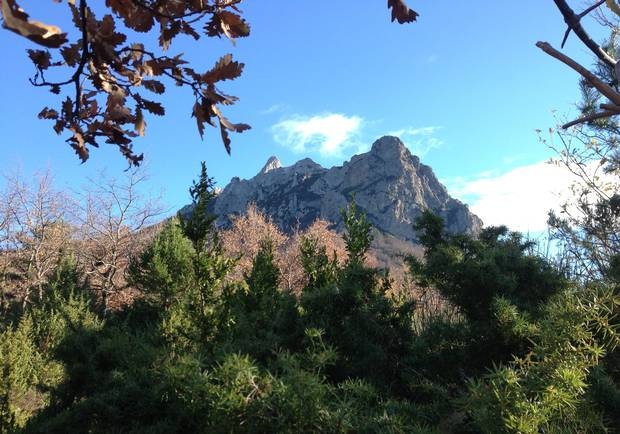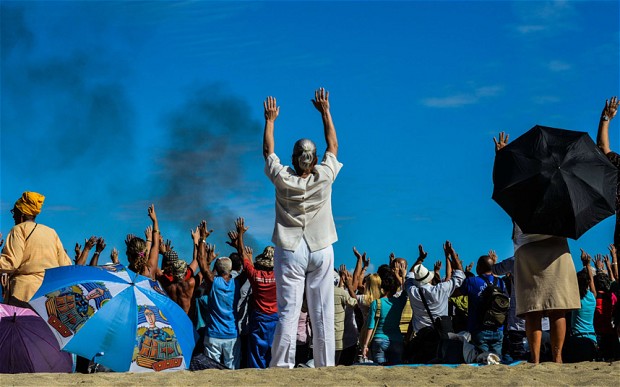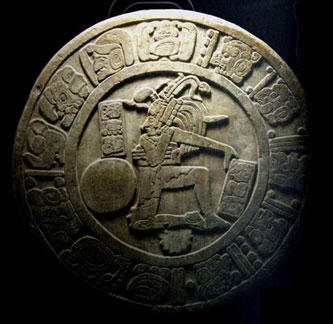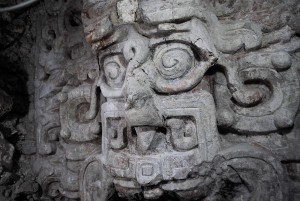
There are doubtless many people who, faced with the prospect of relatives arriving for Christmas, are hoping that the Mayan calendar is right and that the world will end on Friday.
What is more worrying is how many people actually believe this. They include people who use computers and travel in aeroplanes, but who remain credulous about a supposed prophecy left by a Mayan ruler predicting the end of the world in 2012.
The believers divide into two camps: those who think that the earth is about to be destroyed, and those who believe that 21 December marks the end of one major time cycle and the beginning of a new and better one. Tens of thousands of these latter, the optimists, are travelling to Mexico to take part in celebrations. Canny tourism operators there and in Belize, Honduras, El Salvador and Guatemala, have taken a cue from the ancient monument in Tortuguero on which the ambiguous prophecy is inscribed, and have been promoting the date vigorously, with planned festivities including concerts and fireworks.
Elsewhere, some folk are hedging their bets and others are cashing in on them. In Russia, one retailer is selling “Apocalypse Kits” containing, among other things, a bottle of vodka. Not much logic there: if the world ends you will not be able to drink the vodka, if a better world supervenes, you will not need the vodka. Perhaps the kit is for use in the run-up to the great date.
In Boston, Massachusetts, “Preppers” are stockpiling food and sharing survival tips on their website meet-up page, discussing how to cope with a major earthquake, tsunami, plague or global war.
In France, authorities have closed a route to a mountain in the Pyranees which has been singled out as a place to which people can flee when the disaster strikes, because they do not want crowds gathering there in advance of the date.
The equal and opposite reaction to this swirl of expectation is the annoyed response of Central Americans who deplore the trivialisation of Mayan culture, and the weary debunking that the science community has to do, in response to the fact that some of the credulous are frightened and need reassurance.
Earlier this year, a Boston University archaeology team led by Professor William Saturno (alas; a name the credulous will find ominous) discovered the oldest Mayan calendar yet found. It showed that the last time the universe’s great time cycle was reset was in August 3114BC. The Mayans calculated the great cycles of universal time as lasting 1,872,000 days. The Tortuguero monument inscription is interpreted by some to mean that the current time cycle will end after “13 baktuns” – roughly 5,000 years from its start date – which gives 2012 as the final year. In an effort to reassure, Professor Saturno informs us that the calendar actually says “17 Baktuns“, which gives us another 2,000 years.
The United States space agency Nasa released its post-21 December “told you so” video on 11 December, entitled “Why The World Didn’t End Yesterday”. They have solid inductive grounds for this, because the end of the world has been wrongly predicted very many times. The Romans thought their world would end in 389BC because 12 eagles had flown over Romulus’s head at the founding of the city, portending a lifetime of 120 years. In various forms, the Roman world lasted about 2,000 years. The early Christians thought the world was going to end any minute. The Essenes thought the world would end in AD70 when the Romans crushed their revolt. The Montanists of the second century AD believed that they were the last generation.
Martin of Tours predicted that the Apocalypse would occur before AD400, several church fathers then disappointedly predicted AD500, Beatus of Liebana with more risky precision nominated 6 April 793, Gregory of Tours (there must be something in the water of Tours) said “between 799 and 806”, keeping people on their toes for longer. Sextus Julius Africanus said 800, while Thiota said 848. When it was noted that Good Friday and the Feast of the Annunciation coincided in 992, the Christian world believed that the Second Coming would take place within three years. Pope Sylvester said that 1 January 1000 would be the last day. Because 1033 was the thousandth anniversary of the death of Jesus, it too was nominated. Then 1186, then 1260, then … scores more dates up to our time.
Among more recent efforts is the interesting prediction by a columnist for The Nation of Islam, Tynetta Muhammad, that the world would end in 2001. For some it had already come. A tragic case of self-fulfilling prophecy involved nearly 800 followers of a religious movement in Uganda who committed suicide, or were killed by their leaders with poison and fire, after their prediction that the world would end on 1 January 2000 failed. Evangelist Pat Robertson said 29 April 2007 would be the last day; it was only the end of his credibility. Harold Camping picked 21 May 2011, and the next day tried again with 21 October 2011.
The last Last Day was 30 June 2012, nominated by one Jose Luis de Jesus Miranda. Apart from the forthcoming 21 December, we have four more scheduled World Endings for the next couple of centuries: for your diary they are 2028, 2037, 2129, 2240 and 2280. The last two are respectively the Talmud end-ofthe-world and the Koran end-of-the-world.
According to one pessimistic “total destruction” version of what is to happen on 21 December, a planet called Nibiru (aka Eris and Planet X) will collide with Earth. Its invisibility to scientific instruments is explained by the fact that it is hiding behind the Sun. This planet was allegedly discovered by the Sumerians long ago, and was first scheduled to collide with us in May 2003. Having mimicked British trains and buses as to scheduling, its ETA was revised to 21 December 2012 in order to link it with the Mayan “long-count calendar”.
Nasa soberly points out that there are no planets or mega-meteors heading our way, no alignment of planets with apocalyptic tendencies, no danger of the Earth reversing its rotation suddenly, no total blackout of the world’s energy supplies, no extra-large solar storms. But the only prediction that can be made with certainty is the one offered by science: between three and five billion years hence, as the sun swells into a red giant, our planet will become uninhabitable – if we have not made it so vastly sooner through climate change and pollution.
Almost all traditions of thought have their eschatologies – their doctrines of world-endings and what they involve. In Christian eschatology, the “Four Last Things” are Death, Judgment, Heaven and Hell. Certain Buddhist traditions have it that in former times people lived for 80,000 years, but lack of virtue has shortened our lifespans, and there will come a point at which every individual will be born with a sword in hand, and will hunt and kill others as if they are beasts. That will not be the end, though, for through this mayhem a reawakening of virtue will be forced, and our increasingly good descendants will have growing lifespans, until like the First Buddha they live 80,000 years and grow 100 metres tall. (The downside is that they only start having sex at 500 years old.)
Originally posted 2016-04-17 12:27:58. Republished by Blog Post Promoter













